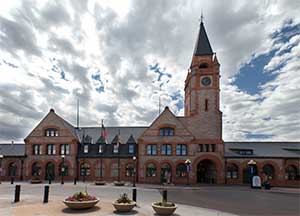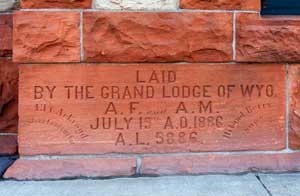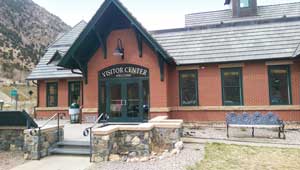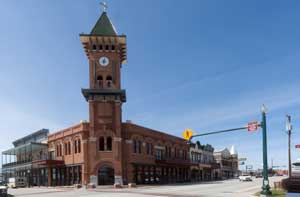Union Pacific Railroad Depot
Located in Cheyenne the state capital of Wyoming is the impressive old Union Pacific railroad depot, part of which is used currently as a Railroad Museum. The Cheyenne Depot was the first in a series that Henry Van Brunt designed for the Union Pacific. The architectural style mirrors the works of American architect, H. H. Richardson.
The Wikipedia Entry: The station is built from blocks of sandstone quarried and transported from Ft. Collins, Colorado. The Depot stands directly down the street from, and facing the, Wyoming State Capitol building, signaling its historic significance in the city and state.
It received major renovations in 1922 to lengthen the building and a redecoration 1929. From 2001 to 2006, another renovation to the depot is being made including a $6.5 million US dollar improvement provided by the City of Cheyenne and plaza built in front of the Depot.
Note: No mention of the Foundation Stone.
The 'down the street' comment in the entry turns out to be just under 500m.
The Stone Reads
LAID
THE GRAND LOADGE OF WYO.
A.F. and A.M.
JULY 19th A.D. 1886
A.L. 5886
The stone also bears the names of the builder, 'EL1 Ackroyd, Lone Constructor' and presumably the person who acted as superintend ant od works, 'Hilland Gerry'
What is the significance of the A.L. 5886?
See http://www.masonic-lodge-of-education.com/anno-lucis.html |





